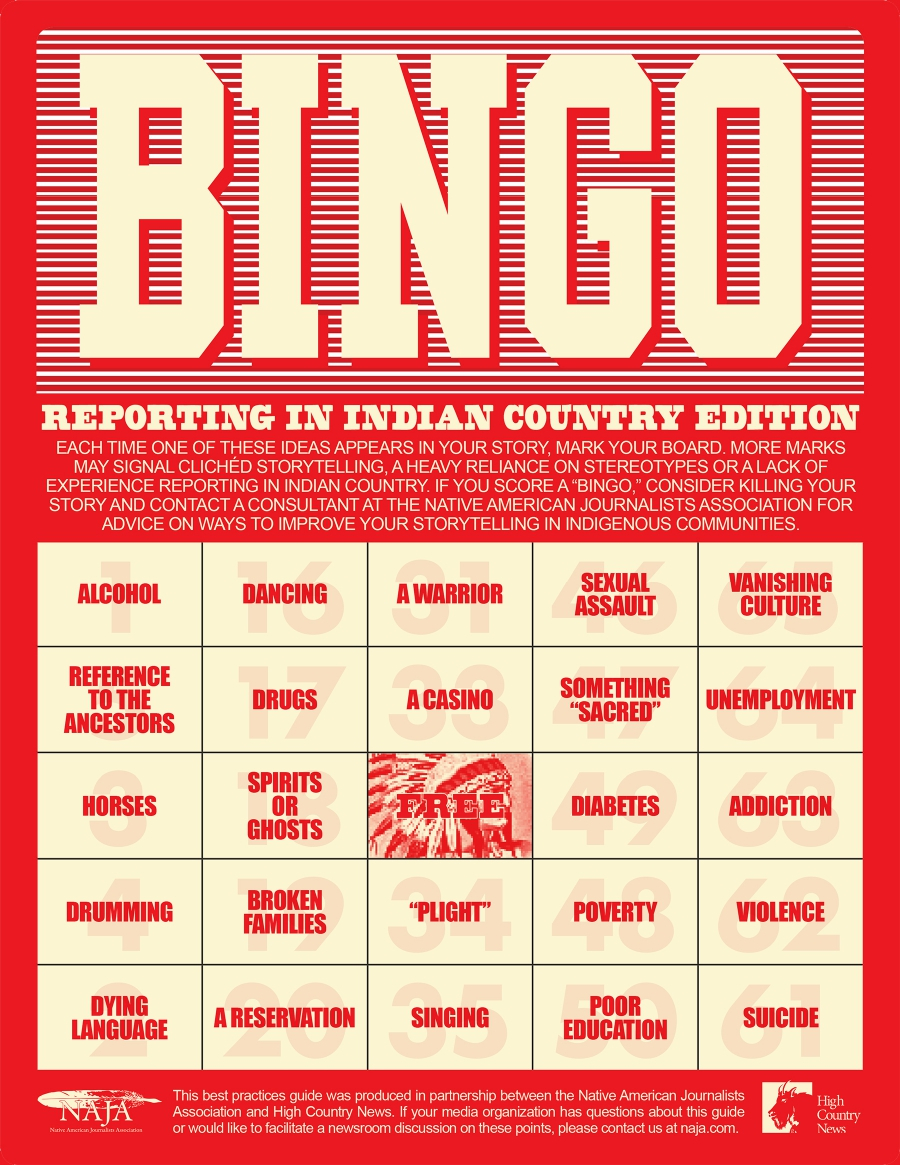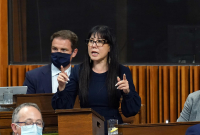Support strong Canadian climate journalism for 2025
The Native American Journalists Association (NAJA) told The New York Times it was not welcome at its annual conference following years of coverage that the association says relied on harmful tropes and stereotypes of Indigenous Peoples.
The rift began in 2019 after The New York Times published a piece by the paper’s former Toronto bureau chief on Inuit artists that was called out for harmful stereotypes.
The headline of the article begins with “Drawn from Poverty”, an assumption and common stereotype. The headlines also referred to Inuit Peoples as “Canada’s Inuit”, a possessive community members in the North found harmful, Francine Compton, NAJA president and CBC Indigenous producer, says.
Compton speaks solely as NAJA president for this story, she adds.
After the controversy over the story, NAJA met with the paper's editorial leaders, but no reconciliation came out of the meeting.
“They knew we wanted an apology for that article, but they did defend the article, they defended the editorial process they took to get to the article, and it wasn’t resolved,” Compton says.
The New York Times confirmed to Canada’s National Observer that no one in its newsroom is Indigenous.
The barring of the paper was a message to the news organization that NAJA isn’t ready for its presence at the conference in Arizona from Aug. 25 to 27. The relationship still needs to be repaired, and there must be an apology and action from The New York Times, Compton adds.
NAJA recently released a report that revealed more than half the articles published by the paper used stereotypes found on the NAJA Bingo card, a tool created by the network to identify a reliance on tropes or stereotypes when reporting on Indigenous communities. The Bingo card identifies if an article utilizes five or more Bingo words (e.g., alcohol, violence, drumming, poor education or vanishing culture), pointing to coverage that may be problematic or inaccurate for Indigenous communities.

“We’re not just making statements about one article, we’re not just focusing on the ‘Canada’s Inuit’ piece, we took our time to have an in-depth analysis,” Compton says.
In NAJA’s analysis, over 800 stereotypes were identified out of 300 articles. In 2021 alone, eight of the 13 articles published by The New York Times received Bingos — or five or more harmful stereotypes.
The report recognizes more reportage on Indigenous communities is a positive trend, but to avoid continued failings, NAJA advocates for more diverse newsrooms for Indigenous journalists, editors and managers.
Citing more Indigenous sources, consulting Indigenous experts, and checking stories against NAJA’s Bingo card are other ways to reduce harm, the report says.
Compton hopes the relationship between The Times, NAJA, and Indigenous communities can be repaired, pointing to the Academy of Motion Picture Arts and Sciences’ apology to Sacheen Littlefeather almost 50 years after her mistreatment at the 1973 Oscars.
“Start taking steps with us down this path of reconciliation,” Compton says. “Come to the table with a meaningful proposal on how we can work together.”
In a statement to Canada’s National Observer, The New York Times said, “After NAJA expressed that they were not comfortable with The Times being at the 2022 conference, we respected their wishes and did not attend.
“We welcome continued dialogue with NAJA and seek future participation at their events,” the statement added.
“The New York Times pursues thorough and detailed news reporting on the lives and culture of Native Americans, First Nations people in Canada, and Indigenous Peoples throughout the Americas. Our commitment remains strong that as this coverage continues, it is representative of voices and perspectives from these communities,” The Times said.
But The Times can’t make that type of statement with full accuracy without having Indigenous leaders in its newsroom, Compton says.
After The Times was told it wasn’t welcome at the conference, it asked for a refund of conference registration fees and its $55 NAJA membership in a move Compton calls “very disappointing.”
Matteo Cimellaro / Local Journalism Initiative / Canada’s National Observer







Comments
So to comply now a days you have to have a worker of color, Asian, first Nations, East Indian, LGBTQ,...
When is this mandatory diversity going to come to an end. It is what you bring to the company not whether or not you fit the new social acceptance criteria. I think this has gotten way out of hand.
Ask yourself, How many minority owned companies are mandated to the same social rule book?
Not trying to start WW3 just want an equal playing field.
Or I suppose they could just educate themselves so they don't get results like "In 2021 alone, eight of the 13 articles published by The New York Times received Bingos — or five or more harmful stereotypes."
But they don't seem to be doing that. And the New York Times is huge, literally the most influential newspaper in the world. I expect a bit more from them than from like the Spuzzum Chronicle or whatever. If they can't either arrange for their pieces to have some expertise beyond knee-jerk stereotypes, then maybe they need an actual First Nations person on staff to give them a frigging clue.
thank you... diversity is a 2 way street no matter who or where you are... learning to understand the reasoning of any decision should be based on both sides of the equation it is evident that the new york times has chosen neither to respect or understand the reasoning behind the ban which is justifiable i believe it just makes sense . as they say ignorance is bliss but it is not an excuse that will last for long . i guess the times are not aware that greenland is not part of canada... get with the program the more input you have the better the quality is... for any newspaper...
Well, it all depends,doesn't it on various factors? Does the entity aspire to be a nationally recognized body, or remain a local parochial affair, catering to a select audience?
Does the entity serve an already diverse community or is it exclusionary to a privileged set?
Mandatory diversity has been dealt a death blow by the Supreme Court with the result that the so-called "melting pot" is fracturing into a thousand different "special interests". Not a good look for a nation of immigrants - oh I forgot immigrants is now a curse word and immigrant people are to be unceremoniously turfed out as illegal aliens. Tsk, Tsk, I wonder where the privileged are going to source their landscapers, their child minders, their nurses and doctors, who will fix their plumbing, cook their meals? In one generation this nation will be broken and peopled in shades of grey.
This is sad on many levels, from both parties. I don't understand why "sacred" is on the scorecard. First Nation's leaders use it all the time. Is more information possible, please?